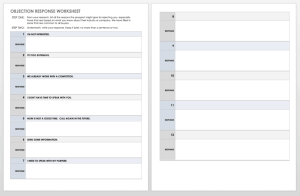Director of digital media Paras Shah tells us how he got started with RMNs and what his focus is on now with RMN campaigns.
Georgia-Pacific advertises its popular paper brands — including Brawny, Angel Soft and others — on retail media networks. Overseeing these campaigns is Paras Shah, the company’s director of digital media. In our discussion, Shah offers his perspective on changing shopper behaviors and what brands can do to proactively reach them through RMNs.
Being proactive is key because the rapidly growing RMN landscape lacks standardization — media buyers beware. This year, one significant step was taken when the IAB released guidance on measurement standards, which are now open for public comment.
The competitive pressure for grocery brands and home products to maintain a presence at the retailer has only increased in the digital space, as consumers buy more products across categories through ecommerce. The RMN boom is, in large part, a result of brands and retailers working together to find the best way to reach these customers as their habits shift toward delivery and pickup.
(The interview has been edited for length and clarity.)
Q: Why did you decide to start advertising Georgia-Pacific brands on retail media networks?
A: I worked at a number of companies before, but began at Georgia-Pacific in 2016. I was actually leading the ecommerce sales business, so basically building out our relationships with all the different grocery (digital) channel players like Kroger, Sam’s Club, Amazon, Walmart. Pickup and delivery were very nascent at the time. What we realized was Amazon was building this little thing called retail media, and we saw something there. We saw others like Walmart when they worked with [retail media agency] Triad. We realized long-term there was a lot of potential there, so we started playing in the space early, looking at the retail media networks that were out there, what they were doing and how they were building out the retail media networks.
A: What we saw during Covid was that all of a sudden, people were buying pickup and delivery a lot. A lot of consumers started downloading mobile apps to do their pickup or delivery orders. They go to the retailer’s website to create accounts and the data that was being captured by the retailers was all first-party data. So there was a spike in retail media investment because now the retailers were able to create closed-loop attribution around advertising. That’s when we started leaning into retail media networks in a really big way.
Q: What were your findings at the beginning?
A: The main barrier for customers was delivery costs. We did tests and found that there would be a big spike in sales if retailers took away their [delivery charges]. We worked with retailers and told them “we’re actually going to pay for the delivery costs if they buy $ 20 of Georgia-Pacific products — we’ll subsidize that.” Those were the instances where we saw significant lift in sales for our products. So we saw our household penetration grow when we partnered with retailers on how to overcome some of the barriers to pickup and delivery.
Q: When you were first leading the ecommerce strategy, did you ever consider your own mobile apps or other DTC strategies?
A: We were initially exploring how we could play in that space. We did sell direct-to-consumer in a very small way. What we were doing initially was trying to sell folks on the data play, using DTC to collect first-party data for our database. We were keeping an eye on third-party deprecation very early on because there were a lot of regulations coming up, like GDPR. We were looking at direct-to-consumer to test products and to collect first-party data.
But during the pandemic, we actually stopped because it wasn’t the path forward and we wanted to make sure our retailer’s shelves were stocked with our products. So, we thought, let’s stop experimenting [with DTC]. Let’s work on getting the products on the retailers’ shelves.
Q: Once you saw the success of waiving shipping fees, how did your retail media partnerships evolve from there?
A: We were approaching the retailers and saying we wanted to work with them on ecommerce. A lot of times pre-Covid it was just this little thing, not a big deal. We were saying, “Let us talk to your retail media arm, let us talk to your ecommerce teams so we can bring them together.” The way to win in this space over time is to make sure we have a strong ecommerce and product assortment — and we had the data to support why retailers should have this assortment.
Q: What insights did you gain from retail media networks?
A: With Covid we saw a huge spike in digital purchases because people didn’t want to go into stores. I could now see what’s in the basket when people are buying our products — is it Quilted Northern or Angel Soft?
When shoppers are in the store, they want products that can fit in their shopping cart. But with e-commerce, it’s a question of if the product fits in a delivery truck. Because, all of a sudden, you’re not confined to what fits in the cart, it’s defined by this larger pack. So we started analyzing the data to find out what people are purchasing in-store versus online. We saw larger packs being purchased because they had to hit a higher threshold for free pickup and delivery. Because we saw different assortments ordered online, we started talking to retailers about how they could have different assortments to appeal to this shopper.
Q: How important are subscriptions in the paper category?
A: “Subscribe and save” is actually a very large component of our business. And part of it is that some of our products, like toilet paper, have 99% household penetration. People just want to buy and forget about it. They hit “subscribe and save” and they just want that product to arrive at their doorstep at a certain frequency. So we actually find that it’s a big driver for our business, and what we do is build our retail media investments around how we increase the number of subscriptions.
The lifetime value of that shopper is much higher than acquiring a shopper for one purchase. We actually want to move to more “subscribe and saves,” so we’ve been talking to a lot of retailers about how we can build out the subscription programs that will help both us and the retailer. With more delivery and pickup, customer loyalty is waning. And with the current economic situation, consumers are deal-seeking. What’s on promotion, what do I have a coupon for? What we’re trying to partner with our retailers on is: Why don’t we try to make them subscribers on our products? Because if you do that, they’re more likely to stay with you as the retailer.
Q: As RMNs continue to grow in number, how do you keep them all straight? What are you looking for when you approach a new one?
A: We’ve tested almost every major retail media network out there. What we’ve been focused on is, first, assessing the data that RMNs have, and also the performance and the effectiveness of them as well. One thing I will say is that five does not equal five across retail media networks. This is because of a lack of standardization in how they measure performance.
Q: What are some of the key metrics that you’re looking for from RMNs in terms of measuring performance?
A: One, we look at what kinds of CPMs they offer. CPMs specifically, or cost-per-clicks. CPMs when it comes to upper-funnel media, and then cost-per-clicks when it comes to search products. Every retail media network is trying to actually dip into sort of the national or brand investments. And what we found is that a lot of retail media networks are charging a significant premium in CPMs — that has big implications on your activation plans. If I’m paying a lot more through a retail media network, I’m sacrificing the amount of consumers I can reach with the frequency I can engage these consumers. So what we have to really do is push back on the RMN on their CPMs and costs because that impacts our activation plan. So cost is number one.
Number two is incrementality. Everyone comes to us and tells us this is what my ROAS is. We push back and ask, is it incremental? And third is the quality of the data. Data in itself isn’t valuable, it’s how the data is refined. You have to find out how it’s being standardized, how it’s being structured and homogenized. Because all of those components together make the data more marketable and more effective.
Q: You sound like you’re very hands-on with these discussions with RMNs. What role do agencies and adtech partners play?
A: We’ve actually made a conscious decision to build out these capabilities in-house. So, I have a team of hands-on-keyboard programmatic traders doing all my media buying for upper-funnel media. I have two search managers who are actually doing the big management in-house. We’ve walked away from an agency supporting our retail media to us doing it in-house because we wanted it hands-on to see the performance, CPMs, what’s working and not working, so we can make changes and pivot on the fly. What we do use is more SaaS platforms to help manage this because they do a great job at structuring the data that we can then analyze and use more effectively. We work with CommerceIQ and we worked with Skai in the past. We work with The Trade Desk and Yahoo to be able to transact with their platforms and make our operations more efficient.
The post How Georgia-Pacific connects with customers on retail media networks appeared first on MarTech.
MarTech(7)






